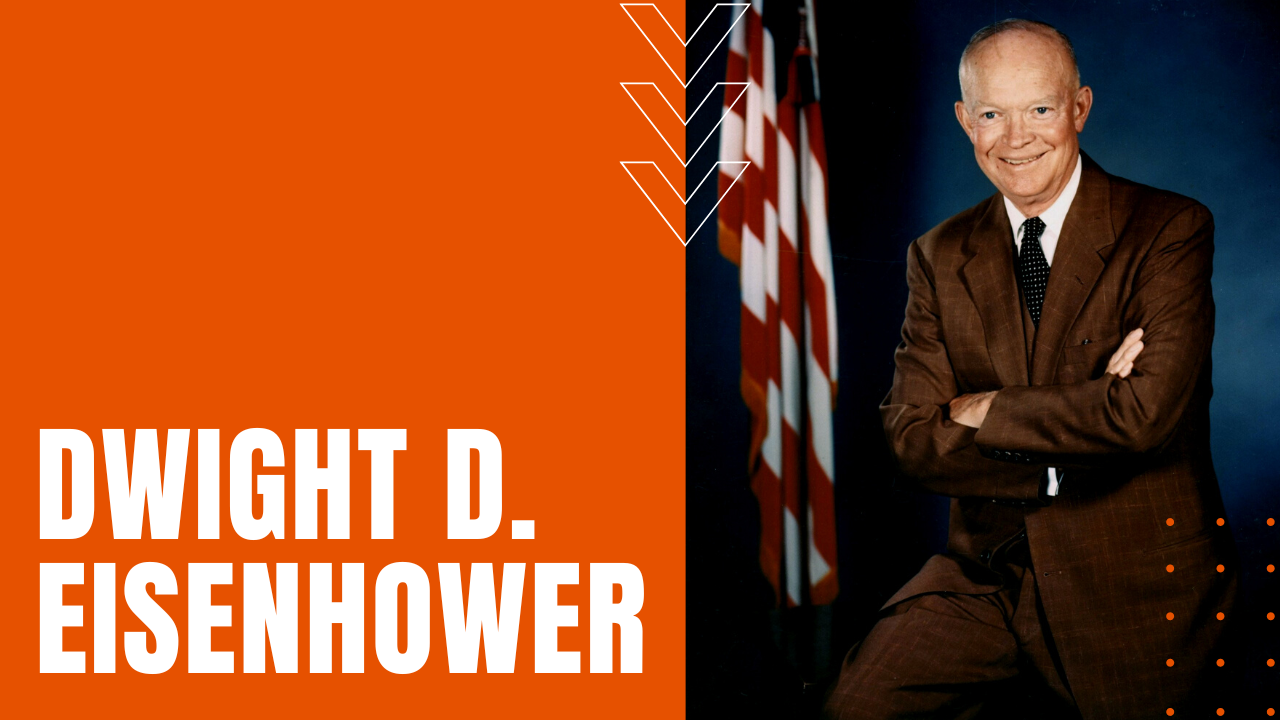Dwight D. Eisenhower

Eisenhower’s Early Life and Military Experience
Born in 1890 Denison Texas, Dwight D. Eisenhower grew up in a poor family in Abilene Kansas, before attending West Point despite his mother’s pacifist objections. After marrying Mamie Geneva Doud in 1916, Eisenhower served as a military aide to General John J. Pershing during World War One, followed by General Douglas MacArthur in the Philippines from 1935 to ’39, until General George C. Marshall called him to Washington to spearhead the successful Allied invasion of North Africa during World War Two, followed by the amphibious invasion of Sicily and the Italian mainland in 1943.
From D-Day to V-E Day
In late 1943, Eisenhower was appointed supreme commander of the Allied Expeditionary Force in Europe, where his astute leadership called for air supremacy over the German Luftwaffe, which then led to the June 6th, 1944 D-Day invasion of five beaches in Normandy France, when 150,000 Allied troops crossed the English Channel, before fighting their way to the liberation of Paris on August 25th, 1944, followed by V-E Day on May 8th, 1945.
World War Two ended after nuclear detonations over Hiroshima and Nagasaki, despite Eisenhower’s adamant objection to using atomic weapons on a Japanese nation clearly on the brink of surrender.
From Ballistics to Politics
Returning home to a heroes welcome, Eisenhower served a short stint as president of Columbia University, until President Harry S. Truman tapped him out to command the newly-formed North Atlantic Treaty Organization or NATO in 1950, intended to combat communist aggression abroad.
Winning the White House with running mate Richard M. Nixon in 1953, Eisenhower’s two terms in office witnessed numerous legislative victories despite a Democratic majority in Congress six out of his eight years in office, leading to the creation of the Department of Health, Education and Welfare, a strengthened Social Security Administration, and the passage of the National Interstate and Defense Highways Act of 1956, which led to the construction of 41,000 miles of Interstate highways across the nation.
He also signed an armistice ending the Korean War, while deciding against an airstrike to rescue French troops from eminent defeat at Dien Bien Phu Vietnam, leaving office with a stern yet largely overlooked warning against an escalating military-industrial complex during the peak years of the Cold War. He passed away from congestive heart failure at Walter Reed Army Medical Center on March 28th, 1969, ending the life of one of the most influential figures of the twentieth century.
